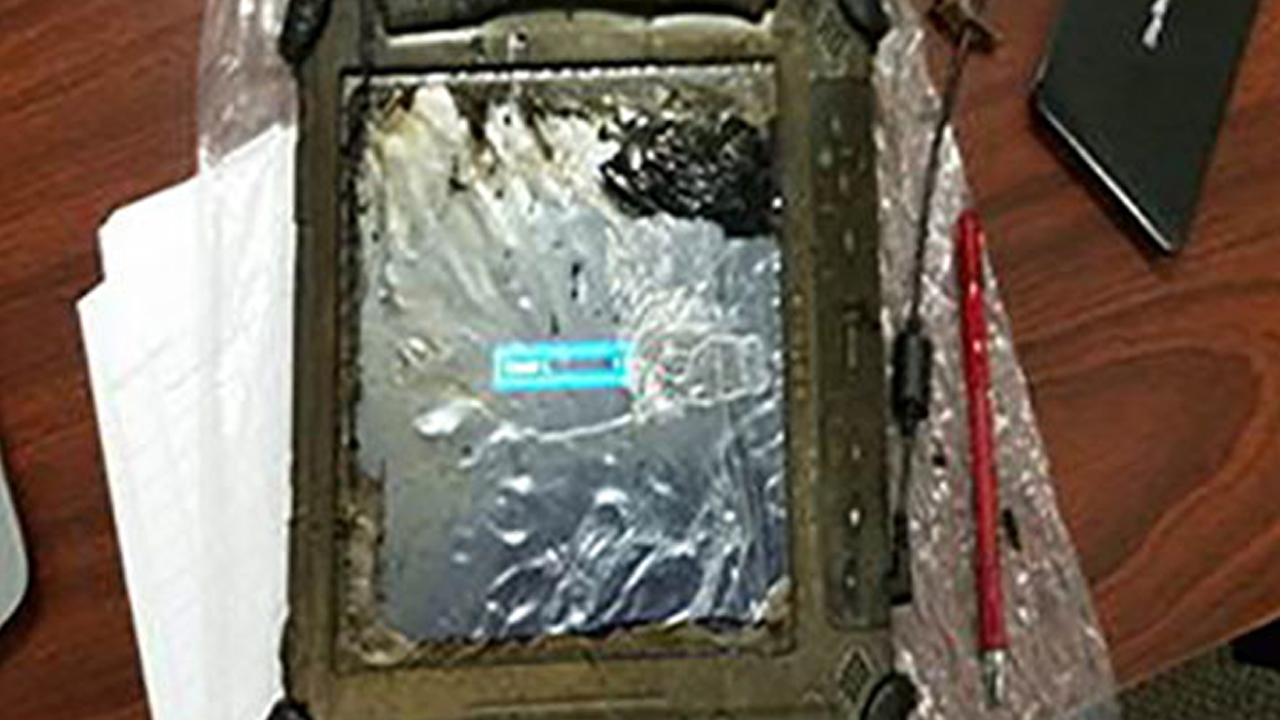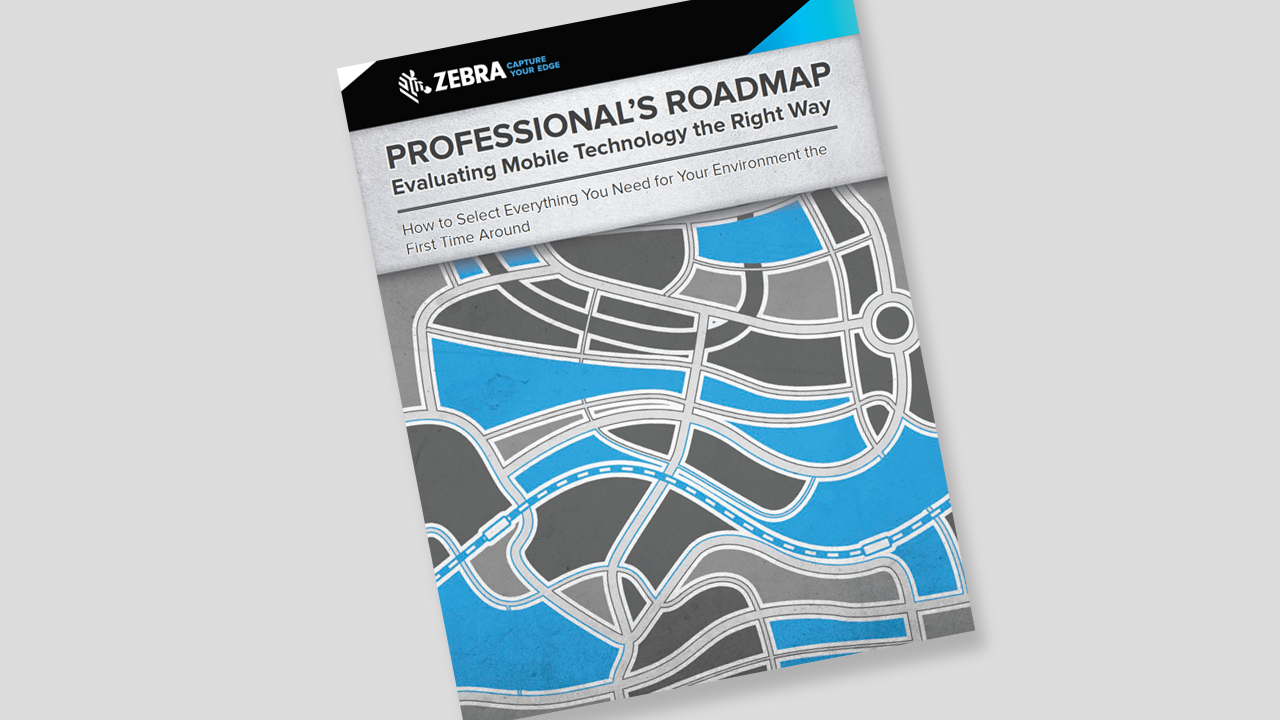
5 Ways to Tell if Your “Rugged” Tablet, Laptop or Handheld is a Knock-Off
Zebra has been in the rugged mobility business for decades. Even more, we recently acquired Xplore, which was the only manufacturer to have exclusively designed and delivered rugged tablet-based mobility solutions for global industry for more than twenty years. So, we know rugged.
It isn’t something we “also” do like many other device manufacturers that also build and sell an extensive lineup of non-rugged or desktop computers, or even vacuum cleaners or air conditioners. Rugged mobility is in our DNA. We also know that rugged devices tend to get a bad rap for being expensive devices when compared to off-the-shelf options marketed for enterprise use. Here’s the problem: You can’t compare the price of a mobile device that’s engineered to be rugged to the core to a device that claims to offer equal protection via the addition of a Gorilla® Glass screen, a “ruggedized body” or external rubber casing. Yet, there are dozens of companies offering what they call “rugged”, and hope that those 6 letters will win the sale.
A trailer hitch can be installed on a VW Passat, but no field service or utility company would think “Now we can save $30,000 by replacing our trucks with compact cars.”
That’s why I think it’s worth considering those qualities that make a rugged mobile device really rugged – and what doesn’t – and explain why many tablets, laptops and smartphones that now claim to be “rugged” are creating a false perception of true rugged pricing, performance and reliability levels.
How to Spot a Knock-Off Rugged Device:
1. How many rugged specs are disclosed? On the surface, an IP65, IP67 or IP68-rated device may seem to provide sufficient protection against your commonly-encountered hazards: dust and water. However, deeming a tablet, laptop or handheld computer that will be used in professional environments as “rugged” using a single spec is not just risky, but irresponsible. It would be like putting a UL label on an electric chainsaw. Yes, it is safe electrically, but the chainsaw itself isn’t a safe tool for the uninitiated user. Water and dust are not the only hazards threatening device reliability, data security or even worker safety. In other words, simply making an otherwise fragile device waterproof or dustproof certainly is not sufficient to make it a viable option for heavy field use, as marketers for the previously-mentioned “consumer rugged” brands would like for you to believe. A truly rugged device will be MIL-STD-810G tested for drops, vibration, shock and extreme temperature tolerance at a minimum. The best rugged manufacturers, those that produce high-quality devices, will test device behavior when exposed to high humidity levels, thermal shock, fluid contaminants and frequent altitude variations. All while the device is operating, not powered off. (MilSpec allows drop testing while the tablet is turned off. We don’t do that, because you’ll drop it when it is operating.)
2. How specific does the manufacturer set their rugged specs, and how are these capabilities certified? It’s not enough to say that a tablet can handle extreme temperatures or that it’s safe to use in Hazardous Locations. A good rugged computer manufacturer will certify HazLoc safety with a third party and detail the exact operating range for every other rugged spec that applies to their device’s claimed rating. For example, Zebra lists a high- and low-temperature threshold, the highest level of vibration and shock tolerated, as well as the precise height of its drop tests and type of material the device was dropped onto (i.e. concrete, plywood, etc.) on our spec sheets as you can see in this example . We were the one of the FIRST to do this; others have since followed our lead. We’ll show you in slow motion what happens to Zebra tablets when they are dropped…
Or shaken...
And we’re known to throw a tablet down a marble staircase and or show a tablet burned in the field during a truck fire (that still works after) to prove the quality and performance we claim on paper. Will other manufacturers do the same? You should ask them.

3. What level of engineering has gone into achieving a rugged rating? You may need to do a little bit of digging on this one, as the devil is in the details here. For example, many devices claim to be sunlight readable or outdoor viewable. But you need to understand the exact technology used to make them that way. Using only anti-glare coatings is insufficient, just as brightening the backlight alone is insufficient. You can’t out-bright the sun, yet many manufacturers try to do just that – and only try to do that. On the flip side, true rugged manufacturers such as Zebra will use a complex display assembly so that reflections are minimized and users enjoy optimal viewing conditions both day and night. (Dimmable displays are just as important to the safety of military and public safety missions at night as bright graphics are to those inspecting and repairing pipelines and utility poles during the day.) Other engineering-related questions to ask:
- Is the tablet or laptop still waterproof when the I/O ports are open? (Zebra offers some tablet models that are still IP-rated when cables are connected to the I/O ports.)
- Does the device have an internal magnesium chassis frame, and does it come with spring-loaded pogo-style connector pins?
- Every wireless device today uses MIMO antenna technology. But just like the UL listing example above, having MIMO isn’t the same as optimizing MIMO. How were the internal antennas designed, where are they located and, most important, will the tablet stay connected in fringe reception areas?
- Did the manufacturer build in heat pipes and thermal fans that enable processors to run at full speed at high ambient temperatures? Or did they opt to bypass that extra engineering step, instead choosing to either integrate a slower processor that doesn’t generate as much heat or simply shut down the device to “protect it” when it gets too hot? The list could go on and on, but you get the point.
4. How long is the device expected to last, according to the manufacturer? This isn’t about length of warranty. This is about length of time that the device will be supported by the manufacturer and supported by the same interface to docks, scanners and other accessories. How long does the manufacturer plan to offer the same chassis, upon which your entire installed mobility solution and workflow scalability depend? And how long does the manufacturer design its rugged computers to last – a minimum of 3, 5 or 7 years? For example, Zebra’s rugged tablets and 2-in-1 laptops are built to last 3-5 years on average, even though many customers are still using their mobile computers seven, eight, even nine years later from when they were first deployed.
5. What is the sticker price? And, what is the TCO? Truly rugged tablets are designed to survive and thrive for many years. Lots of extra engineering, materials and manufacturing processes are employed. As a result, some of the costs will be front-loaded. A well-made rugged tablet will dependably do the job you need it to do, reducing and oftentimes preventing organizational costs incurred by other less expensive device options. In fact, when it comes to mobile devices, price is often a tell-tale sign of rugged purity. A “rugged” tablet that is far less expensive than its competition is most likely far less rugged – so you’re going to immediately sacrifice on quality and performance while incurring ongoing much higher costs over the (short) life of the product. These ongoing costs make up the bulk of the Total Cost of Ownership (TCO). As you price a truly rugged platform that you can rely on long-term (i.e. 3-5 years), realize that the purchase price alone of any mobile computing device can be deceiving. Even if you’re doing an apples-to-apples comparison of two fully rugged-to-the-core tablet, laptop or handheld computers that are comparable both inside and outside on paper, the true and total cost of that device – and your entire mobile solution – is actually determined by many factors.
As industry experts have explained in this webinar and Bob Ashenbrenner recently reiterated in this blog (and this one): while it is fair to assume that “cost” is indicative of device quality, it is also impossible to make a fair assumption about the device’s actual value based on upfront cost (i.e. the sticker price). One rugged device’s superiority over another can only be determined once you understand the ancillary costs that will be required to implement the right workflow software for that device, deploy compatible accessories, and ultimately secure and maintain the entire mobility/IT solution (based on that computing platform) for the next 3-5 years. And, those are just the top-line “costs” that have to be factored in addition to the sticker price.
You also have to calculate the resources that it will require to replace knock-off rugged devices if they fail, along with the downtime losses that will occur while that worker is offline. This isn’t just about the sticker price of the replacement device, either. You have to factor the cost of labor required to re-order, re-configure, re-secure and re-deploy the new device, all while your field worker is “down” and customers aren’t serviced. Multiply that by 100 employees or 10,000 employees and you can see that is going to be hard to justify the few hundred dollars you may save per device up front on a knock-off rugged tablet – or even a non-rugged tablet with a “rugged” case slapped on.
The Takeaway(s):
- True rugged computers are engineered for quality and performance first. Not only do they meet industry benchmarks in these two areas, they are the ones setting new standards. That is why you can trust these fast, powerful, and high-quality devices to do exactly what you need them to do (i.e. work with your software; connect in remote areas; interop with operational technology such as peripherals, IoT, sensors, etc.) and support every workflow and worker as long as you need (i.e. future-proof scalability, OS upgradeability, expandable storage and memory, etc.).
- Like anything else you buy, if the price seems too good to be true, there’s an excellent chance that your instinct is right. You always get what you pay for. In the case of rugged mobile computers, there is a reason why a handheld, tablet or 2-in-1 laptop from Zebra is going to seem more expensive up-front than a consumer- or business-grade “rugged” device you can buy from a “well-known” off-the-shelf brand. They are a lot like a preventative maintenance plan and insurance policy wrapped into one: Their primary purpose is to prevent device failures – and the subsequent business disruptions – that will cost you far more than the policy “premium”. And, should an unpreventable incident occur, that “extra” coverage you paid for with a truly rugged device will ensure you have a way to quickly lockdown, recover, repair or replace a device with minimal impact on everyday business “life”.
As 25+ year mobility solution architect Bob Ashenbrenner has noted before:
‘What looks right on paper may not always translate into a win…The mobile tablet – your “car” – can only go as fast as your software – the “driver” – will push it, regardless of how “fully loaded” it may seem on paper. Basic specs never tell the full story.’
Do your homework to determine if a device is really rugged or just another knock-off. Don’t take shortcuts to speed along a deployment. And, don’t think that sacrificing real world performance to save money will help you secure executive approval for your project – or secure your next promotion. If you really want to impress your boss and help your organization achieve its business mobility goals, download this free 13-step playbook now and diligently heed the advice it offers.

Download the Mobility Buying Playbook now.

Tom Kost
Tom Kost is a Senior Product Manager for Zebra Technologies, focused specifically on defining the roadmap and market strategy for the rugged tablet portfolio.
He has over twenty years of experience in both the engineering and product management of mobile devices for companies such as Xplore (which was acquired by Zebra in 2018), Compaq, Nokia and Dell. Mr. Kost loves creating and selling new mobility products and he enjoys seeing others reap the benefits.






